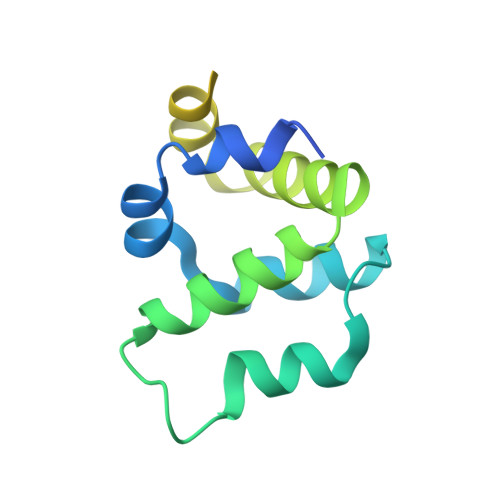Structures of autoinhibited and polymerized forms of CARD9 reveal mechanisms of CARD9 and CARD11 activation.
Holliday, M.J., Witt, A., Rodriguez Gama, A., Walters, B.T., Arthur, C.P., Halfmann, R., Rohou, A., Dueber, E.C., Fairbrother, W.J.(2019) Nat Commun 10: 3070-3070
- PubMed: 31296852
- DOI: https://doi.org/10.1038/s41467-019-10953-z
- Primary Citation of Related Structures:
6N2M, 6N2P - PubMed Abstract:
CARD9 and CARD11 drive immune cell activation by nucleating Bcl10 polymerization, but are held in an autoinhibited state prior to stimulation. Here, we elucidate the structural basis for this autoinhibition by determining the structure of a region of CARD9 that includes an extensive interface between its caspase recruitment domain (CARD) and coiled-coil domain. We demonstrate, for both CARD9 and CARD11, that disruption of this interface leads to hyperactivation in cells and to the formation of Bcl10-templating filaments in vitro, illuminating the mechanism of action of numerous oncogenic mutations of CARD11. These structural insights enable us to characterize two similar, yet distinct, mechanisms by which autoinhibition is relieved in the course of canonical CARD9 or CARD11 activation. We also dissect the molecular determinants of helical template assembly by solving the structure of the CARD9 filament. Taken together, these findings delineate the structural mechanisms of inhibition and activation within this protein family.
Organizational Affiliation:
Early Discovery Biochemistry Department, Genentech, South San Francisco, CA, 94080, USA.














